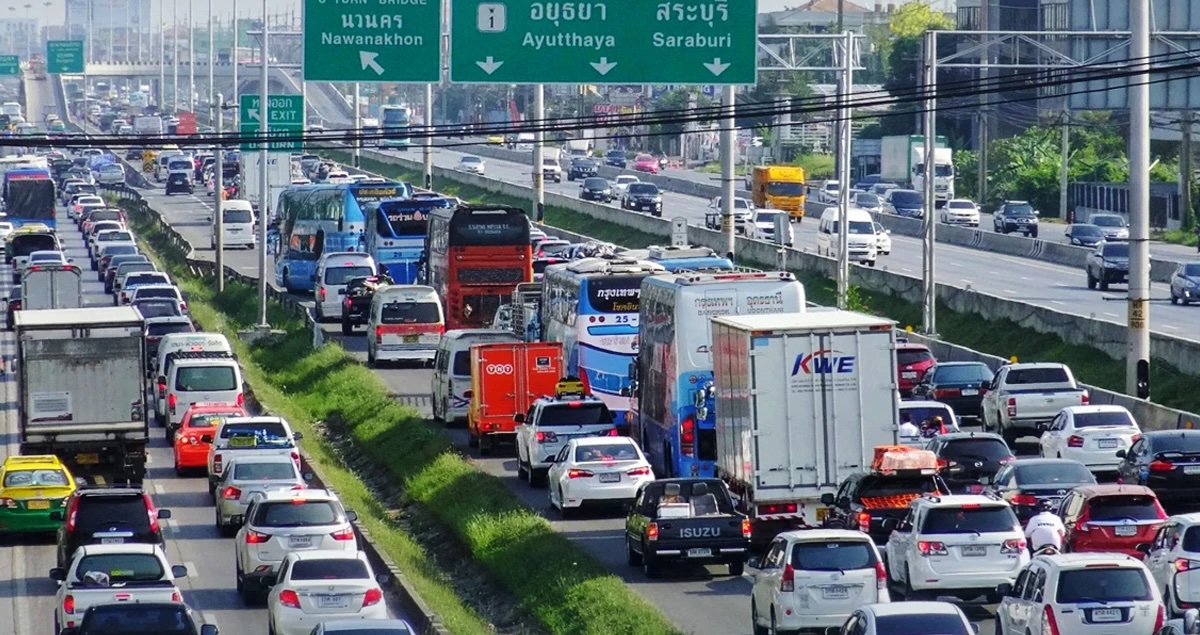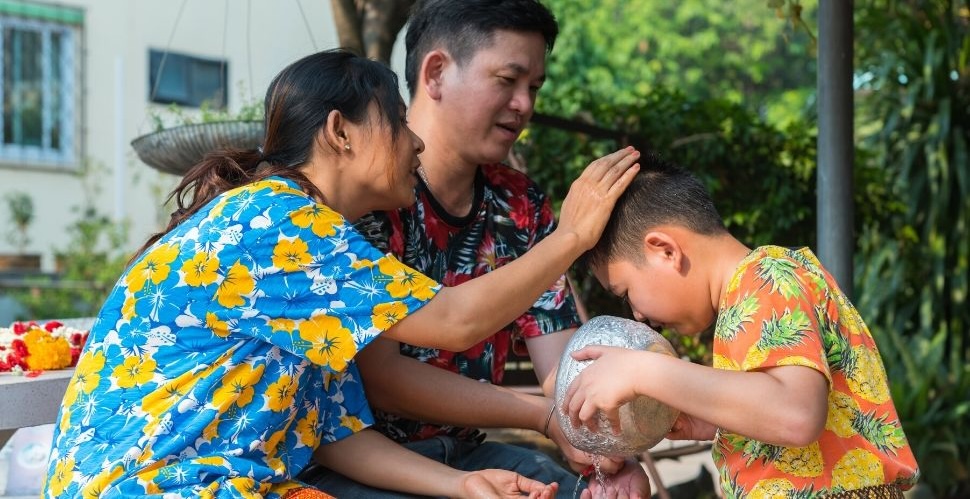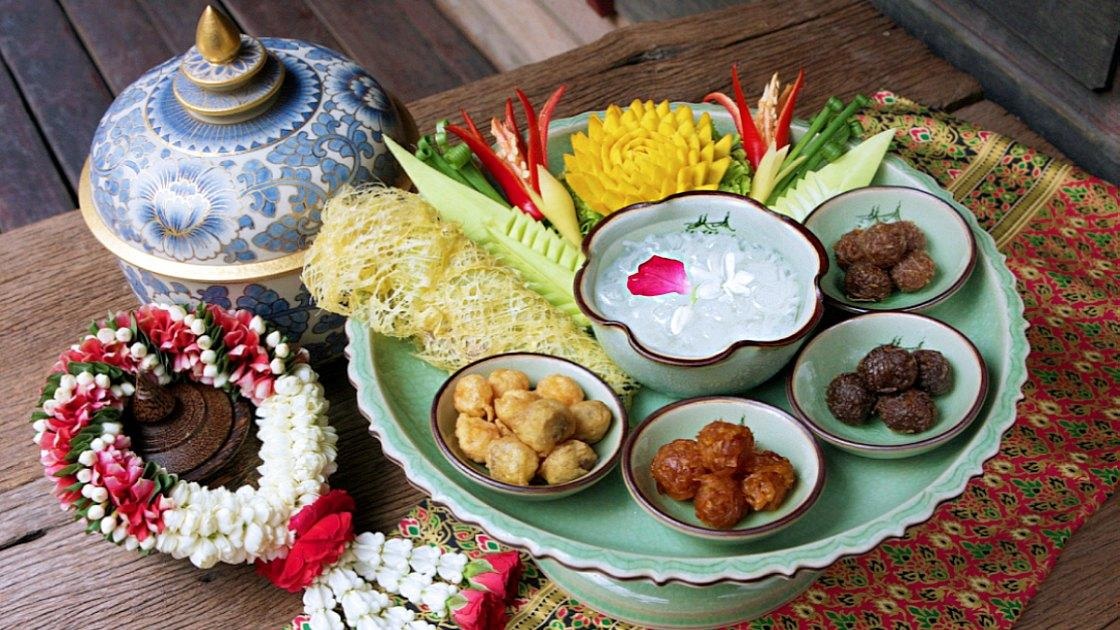Celebrating Songkran Like a Thai
In the traditional sense Thai new year - Songkran - is a Buddhist festival primarily devoted to family and spiritual renewal. It is a time to reflect on the past year and take a look at the new year ahead, just like in the western new year, while spending great time with family and friends.
Of course, as we covered in the essential guide, Songkran is not celebrated through freezing cold new year countdowns. Instead, Songkran brings about hot, wet and humid streets filled with thousands of festive water warriors, who keep themselves busy by wishing each other happy new year with some water.
In this guide we will cover the traditional cultural aspects of Songkran in a little bit more detail, and how a typical Thai family would go about with their annual celebration of the festival. We find the typical daily routines over the festival dates, and of course, what would be on the menu. Afterall, it should be fair to say that in Thailand life revolves around food, and food is in the center of every celebration in the Kingdom!

Familytime back in hometowns
Bangkok is a city with officially around 10 million inhabitants, but in reality, many more Thais are working in Bangkok but are still recorded in other provinces. Large proportion of the population in major cities, especially Bangkok, are either temporary or permanent migrants from other provinces of Thailand.
Songkran being the most important festival of the year, it is natural that many Thais take the festival week off and travel back to their hometowns to spend time with families, relatives and friends.
As a consequence, Bangkok loses up to half of its population during the Songkran New Year festival, and it really shows! In general the streets, malls and public transportation become much quieter, and traffic much lighter, than usual. Different story of course are the main event hotspots that surely still have enough population to draw a great party!

A typical Songkran week
The days before Songkran means that highways will be packed with cars and motorcycles filled with gifts and great festival mood on their way back to hometowns.
April 12th: Preparing for Songkran
Before the festival Thai houses are neatly cleaned and prepared with Buddhist altars and offerings for the new year celebrations. Homes and Buddha altars may be decorated with flowers, incense and candles to level up the festive mood. Either colorful floral (hawaiian) shirts or traditional Thai silk dresses (or shirts) are also drawn ready.
Shopping: A typical Songkran groceries shopping list of a Thai Family might look like:
- Super soakers
- Tanaka (powder spread on skin to protect from sunburns)
- Candles, incense and flowers
- New Songkran (hawaii) shirts
- Plenty of drinks and beverages (Thai whisky, beer, buckets of ice, soda, coke, juice)
- Ingredients (fish, shrimp, pork, vegetables, fruits, etc.)
April 13th: First day of Songkran
In the morning families would wake up early and head to Temples to conduct Buddhist ceremonies. The ceremonies would at least include prayers, merit making and receiving blessings from the monks.
Some time could also be dedicated for building beautiful sand pagodas at the Temple site, along with your loved ones, of course. Other temple activities would include rod nam dam huua in which scented water is poured over the hands of the monks, and song nam phra in which the Buddha images are bathed.

It is also important to understand that temples are the center of the community, especially in more rural areas. So temples are also a place where you meet cousins, friends, neighbours and other familiar faces, and share the latest news and gossips, often over a bowl of rice.
Afternoon would be dedicated for water fights and socializing. Friends and families gather together and celebrate with a great meal, plenty of drinks, and especially among the younger generations, with water fights!
April 13th in Thai is called Maha Songkran, the day when the sun passes into Aries on the zodiac, the last day of the old year.
April 14th: The National Family Day
On the second day, families mainly spend time bonding together. Traditionally children would prepare scented water infused with rose and jasmine to wash their parents hands and feet. Parents on the other hand would hand children flower garlands and blessings. Sometimes gifts may also be exchanged.

Today some of the more ceremonial meals are often prepared at homes, and families gather together to enjoy.
April 14th in Thai is called Wan Nao, the transition day between the old and new years.
April 15th: Third day of Songkran
The third day of Songkran does not follow any strict customs on ways to celebrate, and is a more of a freestyle day for the festivities. In big cities there are still large water fights taking place, but in more rural areas the celebrations are becoming much less wet by now.
Temple gatherings and communal celebrations still roll strong on the third day, especially for ones who have taken the whole week off. For those that need to return to work on the next day, this day would be partly dedicated for farewells and return trips. You can expect traffic jams on the main highways from people returning to the cities for work.
April 15th in Thai is called Wan Thaloeng Sok, the beginning of a new era, the new year day itself.
Days following official festival days
Enter the Wan Lai (after parties) phase of Songkran celebrations! From 16th April onwards it is time for extended holidays and festivities.
Many interesting festivals still take place during Wan Lai. Some of which still involve water fights, such as the music festival Void.
Popular Songkran foods and drinks
In Thailand, there is no such a thing as festival without a special focus on food! We we all know (objectively, of course) that Thai food is the most delicious and diverse cuisine in the world, and it's got plenty to offer for Songkran celebrations!
Traditional ceremonial and auspicious dishes
Khao chae is the most common ceremonial dish only eaten during Songkran and other special occasions. It is originally a dish that was only served to the royals in Thailand.
Khao chae literally means "rice soaked in cool water". Despite it's underwhelming name, it is a dish that is both visually very pretty and very hard to prepare! Only a certain type of rice is suitable without making it soggy, and the rice is infused in flower scented water, with a very particular technique.
Khao chae is usually served with visually appealing side dishes such as shrimp paste kapi balls, stuffed shallots or sweet peppers, shredded pork or beef, pickled vegetables and fresh chilies and other vegetables.

There are also many beliefs in Thailand, that certain foods bring about good luck and prosperity for the new year. These auspicious dishes are often visually pretty and in the old times used to be available only for the higher classes of the society.
- Sweet sticky rice (Khao Niao Moon): Should not be confused with mango sticky rice Khao Niao Moon symbolises unity and togethernes (such as love and close family ties)

- Steamed fish: Fish represent progress, as they are always swimming forward. Eating fish is believed to bring success and prosperity in life
- Braised eggs in sweet sauce (Kai Palo): The egg symbolises new life and abundance, making it an auspicious dish to represent a prosperous start to the new year
- Foi Thong, Thong Yip and Thong Yod: These traditional sweets all begin with the word thong, meaning gold. They symbolize fortune and wealth. They are considered to bring luck and wealth in future endeavours

- Clear winter melon soup (Tom Chued Fak): Winter melon symbolises calmness and serenity. With its soft white colour it reflects tranquility and is thought to bring calmness throughout the year
Mookata
Mookata is probably the number one festival dinner for Thais. It is a barbeque hotpot where you barbeque meat on a hot plate while at the same time vegetables and other ingredients are boiling in a soup that surrounds the hot plate. Most of the time the heat comes from a charcoal fire that is placed below the hot plate.
Mookata is the perfect representation of Thai communal spirit. It's a meal where people gather around the hot pan, cook together and enjoy the time together.
Most popular ingredients for mookata are thin pork slices, shrimps, chicken, mushrooms and various other vegetables. You eat as the food cooks, and use a dipping sauce (everyone has their own secret recipe) to give every bite a nice kick!
Desserts
Thai desserts are a perfect way to end a meal. Here are some of the most popular desserts that you can find in Thailand:
- Coconut ice cream
- Mango sticky rice
- Coconut pudding
Alcoholic drinks
Whisky soda should be the national drink of Thailand! It is very popular and refreshing drink, and pairs amazingly well with hot & spicy Thai cuisine.
There's nothing fancy in this drink, it is honest, simple and refreshing (and Thai soda tends to have higher carbonation level than elsewhere), and it's a guaranteed crowd pleaser!
What you need is a bottle of Thai whisky (e.g. Hong Thong, Sangsom, Blend 385 or Regency, if you're feeling a bit fancy), highly carbonated Thai soda (most commonly Singha, Leo or Rock Mountain brands), and plenty of ice. Mixing is simple: fill your glass with ice (to the top), pour your whisky (no measure! just pour until you feel happy) and top it off with soda water. Mix well with a spoon or index finger.
Another popular drink is Thai beer. Perhaps need no introduction, but let's just refresh your memory: Singha, Leo, and of course Chang. Everyone has their own preferred brand, and at times the contest can get fierce!
Non-alcoholic drinks
Thai milk tea (Cha Thai) is a perfect non-alcoholic drink for the hot days of Songkran celebrations. It is a sweet and creamy drink that is made by mixing black tea, sugar, condensed milk and water. It has a distinctive orange colour and a sweet and somewhat bitter taste. It is most commonly served cold, but can also be served hot if you wish so.
Lemon honey soda (Nam phueng manao soda) is a refreshing non-dairy drink that is made from a mixture of lemon juice, honey, soda water and ice. It is also a perfect refreshment during the hot days.